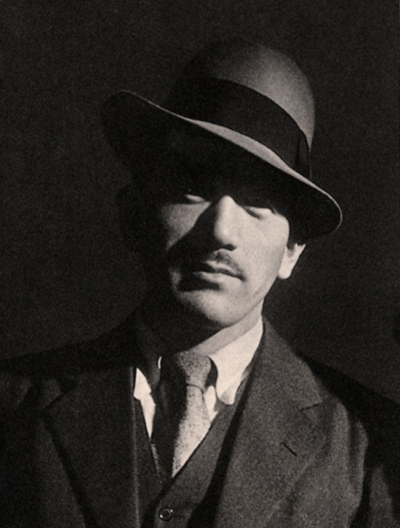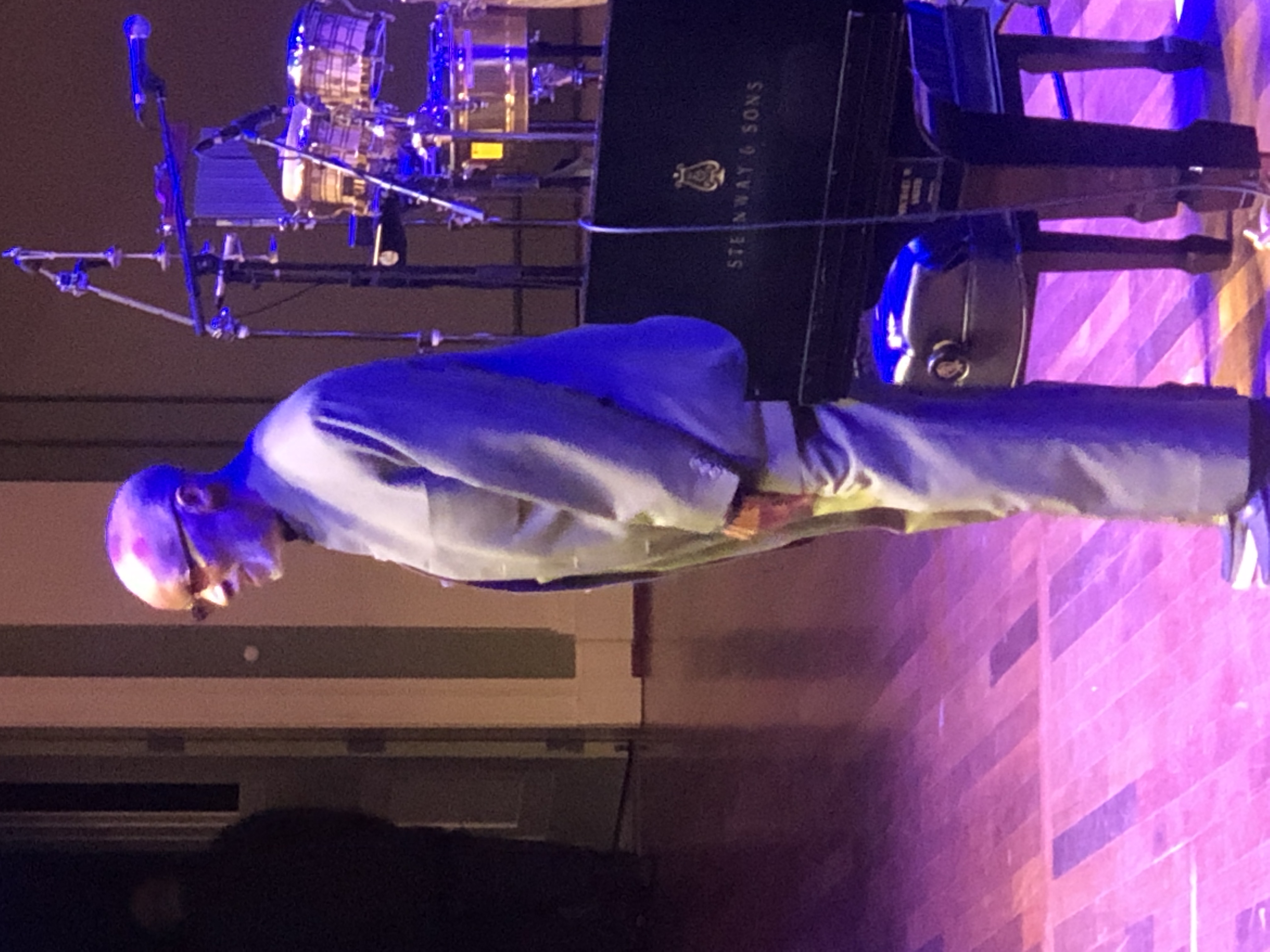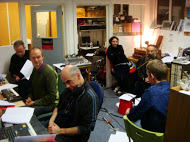|
Taeko Kunishima
Taeko Kunishima (September 2) is a Japanese jazz pianist, who has released four albums on the UK label 33Jazz. Initially influenced by classical composers, she switched to jazz music after listening to Miles Davis. She incorporates traditional Japanese music into her repertoire, frequently composing for and collaborating with shakuhachi (Japanese flute) and shamisen (Japanese three-stringed lute) . Life Taeko Kunishima's first contact with the piano was at the age of seven. Initially influenced by classical composers such as Beethoven and Mozart, she studied classical piano at university. However, after listening to jazz trumpeter Miles Davis her style changed significantly. She later moved to England and began to develop her personal style - in the words of AllAboutJazz, "her startling, angular contemporary jazz approach, echoing Thelonious Monk and influences of her native Japan." In the United Kingdom she worked with various musicians in assorted styles such as Latin po ... [...More Info...] [...Related Items...] OR: [Wikipedia] [Google] [Baidu] |
Jazz Music
Jazz is a music genre that originated in the African-American communities of New Orleans, Louisiana in the late 19th and early 20th centuries, with its roots in blues and ragtime. Since the 1920s Jazz Age, it has been recognized as a major form of musical expression in traditional and popular music. Jazz is characterized by swing and blue notes, complex chords, call and response vocals, polyrhythms and improvisation. Jazz has roots in European harmony and African rhythmic rituals. As jazz spread around the world, it drew on national, regional, and local musical cultures, which gave rise to different styles. New Orleans jazz began in the early 1910s, combining earlier brass band marches, French quadrilles, biguine, ragtime and blues with collective polyphonic improvisation. But jazz did not begin as a single musical tradition in New Orleans or elsewhere. In the 1930s, arranged dance-oriented swing big bands, Kansas City jazz (a hard-swinging, bluesy, improvisational styl ... [...More Info...] [...Related Items...] OR: [Wikipedia] [Google] [Baidu] |
London Jazz Festival
The London Jazz Festival is a music festival held every November. It takes place in London venues such as the Barbican and the Royal Festival Hall and in smaller jazz clubs, such as Ronnie Scott's and the Vortex Jazz Club. It is produced by Serious. History In 1970 the London Borough of Camden added a Jazz Week to the Camden Festival. During the next fifteen years, the Camden Jazz Weeks were held at venues around the borough: Bloomsbury Theatre, Logan Hall, London Forum, Roundhouse, and Shaw Theatre. By the early nineties, the Camden Festival was closed. In 1992 the company Serious, which had produced the Camden festival, started the London Jazz Festival with help from the London Arts Board. In 2011, the festival was produced in association with BBC Radio 3. The festival is branded as the EFG London Jazz Festival, reflecting headline sponsorship since 2013 by EFG Private Bank, part of Switzerland's EFG International. A history of the festival was published in 2017 to commemo ... [...More Info...] [...Related Items...] OR: [Wikipedia] [Google] [Baidu] |
21st-century Japanese Women Musicians
The 1st century was the century spanning AD 1 ( I) through AD 100 ( C) according to the Julian calendar. It is often written as the or to distinguish it from the 1st century BC (or BCE) which preceded it. The 1st century is considered part of the Classical era, epoch, or historical period. The 1st century also saw the appearance of Christianity. During this period, Europe, North Africa and the Near East fell under increasing domination by the Roman Empire, which continued expanding, most notably conquering Britain under the emperor Claudius (AD 43). The reforms introduced by Augustus during his long reign stabilized the empire after the turmoil of the previous century's civil wars. Later in the century the Julio-Claudian dynasty, which had been founded by Augustus, came to an end with the suicide of Nero in AD 68. There followed the famous Year of Four Emperors, a brief period of civil war and instability, which was finally brought to an end by Vespasian, ninth Roman emperor, a ... [...More Info...] [...Related Items...] OR: [Wikipedia] [Google] [Baidu] |
21st-century Pianists
The 1st century was the century spanning AD 1 ( I) through AD 100 ( C) according to the Julian calendar. It is often written as the or to distinguish it from the 1st century BC (or BCE) which preceded it. The 1st century is considered part of the Classical era, epoch, or historical period. The 1st century also saw the appearance of Christianity. During this period, Europe, North Africa and the Near East fell under increasing domination by the Roman Empire, which continued expanding, most notably conquering Britain under the emperor Claudius (AD 43). The reforms introduced by Augustus during his long reign stabilized the empire after the turmoil of the previous century's civil wars. Later in the century the Julio-Claudian dynasty, which had been founded by Augustus, came to an end with the suicide of Nero in AD 68. There followed the famous Year of Four Emperors, a brief period of civil war and instability, which was finally brought to an end by Vespasian, ninth Roman emperor, a ... [...More Info...] [...Related Items...] OR: [Wikipedia] [Google] [Baidu] |
Living People
Related categories * :Year of birth missing (living people) / :Year of birth unknown * :Date of birth missing (living people) / :Date of birth unknown * :Place of birth missing (living people) / :Place of birth unknown * :Year of death missing / :Year of death unknown * :Date of death missing / :Date of death unknown * :Place of death missing / :Place of death unknown * :Missing middle or first names See also * :Dead people * :Template:L, which generates this category or death years, and birth year and sort keys. : {{DEFAULTSORT:Living people 21st-century people People by status ... [...More Info...] [...Related Items...] OR: [Wikipedia] [Google] [Baidu] |
Japanese Women Pianists
Japanese may refer to: * Something from or related to Japan, an island country in East Asia * Japanese language, spoken mainly in Japan * Japanese people, the ethnic group that identifies with Japan through ancestry or culture ** Japanese diaspora, Japanese emigrants and their descendants around the world * Japanese citizens, nationals of Japan under Japanese nationality law ** Foreign-born Japanese, naturalized citizens of Japan * Japanese writing system, consisting of kanji and kana * Japanese cuisine, the food and food culture of Japan See also * List of Japanese people * * Japonica (other) * Japonicum * Japonicus * Japanese studies Japanese studies (Japanese: ) or Japan studies (sometimes Japanology in Europe), is a sub-field of area studies or East Asian studies involved in social sciences and humanities research on Japan. It incorporates fields such as the study of Japanese ... {{disambiguation Language and nationality disambiguation pages ... [...More Info...] [...Related Items...] OR: [Wikipedia] [Google] [Baidu] |
Japanese Jazz Pianists
Japanese may refer to: * Something from or related to Japan, an island country in East Asia * Japanese language, spoken mainly in Japan * Japanese people, the ethnic group that identifies with Japan through ancestry or culture ** Japanese diaspora, Japanese emigrants and their descendants around the world * Japanese citizens, nationals of Japan under Japanese nationality law ** Foreign-born Japanese, naturalized citizens of Japan * Japanese writing system, consisting of kanji and kana * Japanese cuisine, the food and food culture of Japan See also * List of Japanese people * * Japonica (other) * Japonicum * Japonicus * Japanese studies {{disambiguation Language and nationality disambiguation pages ... [...More Info...] [...Related Items...] OR: [Wikipedia] [Google] [Baidu] |
Yasujirō Ozu
was a Japanese film director and screenwriter. He began his career during the era of silent films, and his last films were made in colour in the early 1960s. Ozu first made a number of short comedies, before turning to more serious themes in the 1930s. The most prominent themes of Ozu's work are marriage and family, especially the relationships between generations. His most widely beloved films include ''Late Spring'' (1949), ''Tokyo Story'' (1953), and ''An Autumn Afternoon'' (1962). Widely regarded as one of the world's greatest and most influential filmmakers, Ozu's work has continued to receive acclaim since his death. In the 2012 ''Sight & Sound'' poll, Ozu's ''Tokyo Story'' was voted the third-greatest film of all time by critics world-wide. In the same poll, ''Tokyo Story'' was voted the greatest film of all time by 358 directors and film-makers world-wide. Biography Early life Ozu was born in the Fukagawa, Tokyo, the second son of merchant Toranosuke Ozu and his wife ... [...More Info...] [...Related Items...] OR: [Wikipedia] [Google] [Baidu] |
Ahmad Jamal
Ahmad Jamal (born Frederick Russell Jones, July 2, 1930) is an American jazz pianist, composer, bandleader and educator. For six decades, he has been one of the most successful small-group leaders in jazz. Biography Early life Jamal was born Frederick Russell Jones in Pittsburgh, Pennsylvania, on July 2, 1930. He began playing piano at the age of three, when his uncle Lawrence challenged him to duplicate what he was doing on the piano. Jamal began formal piano training at the age of seven with Mary Cardwell Dawson, whom he describes as greatly influencing him. His Pittsburgh roots have remained an important part of his identity ("Pittsburgh meant everything to me and it still does," he said in 2001) and it was there that he was immersed in the influence of jazz artists such as Earl Hines, Billy Strayhorn, Mary Lou Williams, and Erroll Garner. Jamal also studied with pianist James Miller and began playing piano professionally at the age of fourteen, at which point he was recogniz ... [...More Info...] [...Related Items...] OR: [Wikipedia] [Google] [Baidu] |
Shakuhachi
A is a Japanese and ancient Chinese longitudinal, end-blown flute that is made of bamboo. The bamboo end-blown flute now known as the was developed in Japan in the 16th century and is called the .Kotobank, Fuke shakuhachi. The Asahi ShimbunKotobank, Shakuhachi. The Asahi Shimbun A bamboo flute known as the , which is quite different from the current style of , was introduced to Japan from China in the 7th century and died out in the 10th century. [...More Info...] [...Related Items...] OR: [Wikipedia] [Google] [Baidu] |
Vortex Jazz Club
The Vortex Jazz Club is a music venue in London, England. It was founded by David Mossman in the 1988. Background The Vortex started as a jazz club in 1988 and was located in Stoke Newington Church Street, north London. But after the acquisition of that building by property developers, the club was moved in 2005 to the Dalston Culture House in Gillett Street, N16, in Gilett Square. The Square opened on 10 November 2006 with a performance by Andy Sheppard's Saxophone Massive, a band of 200 saxophonists. The street in front of the club was renamed "Aim Bailey Place" in December 2007 in honor of guitarist Derek Bailey. Musicians who have played at the Vortex include Bailey, Django Bates, Tim Berne, Liane Carroll, John Etheridge, F-IRE Collective, Last Amendment, Evan Parker, Ian Shaw, and Kenny Wheeler. The first album on the club's record label was by the Portico Quartet. The club also hosts a Vocals@Vortex Open Mic Session run by Romy Summers and the house band, The Bob Stu ... [...More Info...] [...Related Items...] OR: [Wikipedia] [Google] [Baidu] |
Resonance FM
Resonance 104.4 FM is a London based non-profit community radio station specialising in the arts run by the London Musicians' Collective (LMC). The station is staffed by four permanent staff members, including programme controller Ed Baxter and over 300 volunteer technical and production staff. Until September 2007, its studios were located on Denmark Street before moving to its present location at 144 Borough High Street, Southwark. The station broadcasts to a radius on 104.4 MHz FM from a transmitter on the roof of Guy's Hospital at London Bridge. Its schedule includes nearly 100 shows catering to many sub-communities of the London area on a wide variety of subjects including a multitude of musical genres, local and foreign current affairs and subjects of local interest. Noted for its policy of giving broadcasters free rein of their creative outlet, it has been described by '' Time Out'' as "brilliantly eccentric". The station receives funding grants from Arts Council En ... [...More Info...] [...Related Items...] OR: [Wikipedia] [Google] [Baidu] |







